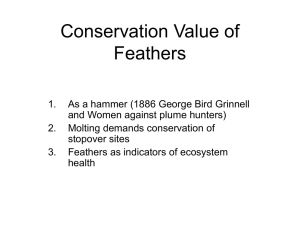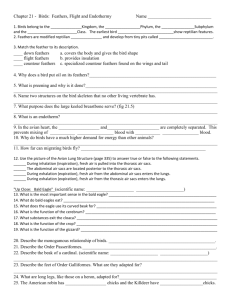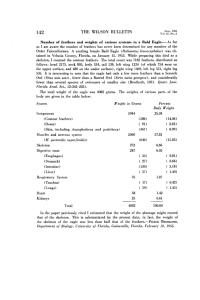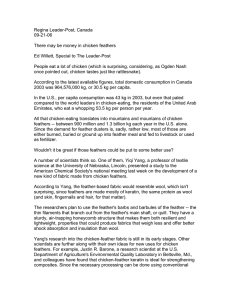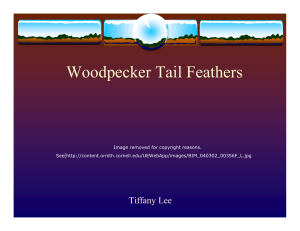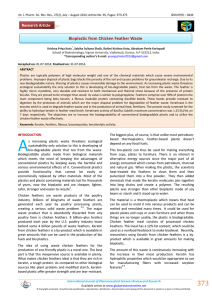Feathers I: structure
advertisement
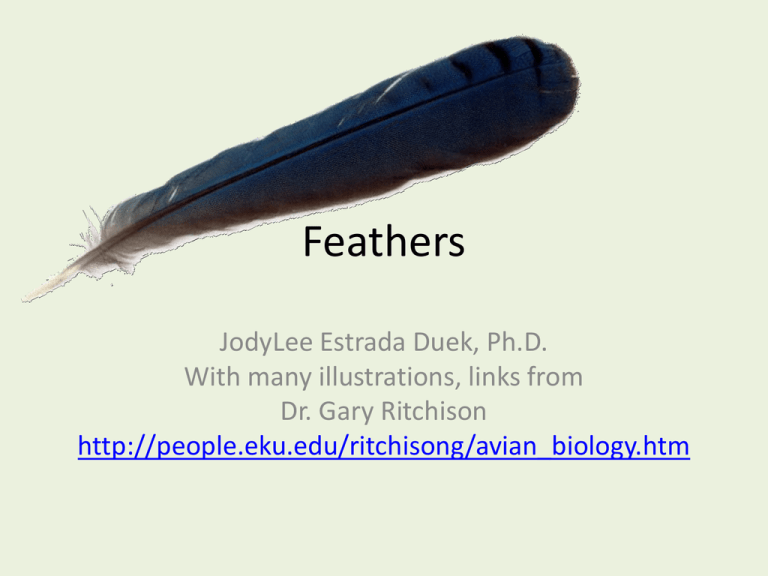
Feathers JodyLee Estrada Duek, Ph.D. With many illustrations, links from Dr. Gary Ritchison http://people.eku.edu/ritchisong/avian_biology.htm birds are distinguished primarily by feathers; feathers are responsible for two very important features of birds: warm-bloodedness (endothermy) and flight. Parts of a feather: 1. Vane 2. Rachis 3. Barb 4. Afterfeather 5. Hollow shaft, calamus Feathers are made of keratin • • • • • • Keratin is a protein Similar to our hair or nails Grow in specific areas or tracts Number of feathers depends on size, ecology About 1/3 of total feathers are on head Some hummingbirds under 1000, some swans 25,000 in winter • A wild pheasant Rheinhartia ocellata has tail feathers over 5 feet long • A birds feathers weigh about twice as much as their dried bones (or more) Feather Morphogenesis • Animations of Feather Morphogenesis Feather evolution 1. Flight Feathers • Wing feather • Tail feather 2. Contour Feathers • Provide shape, contour • Coloring • Protection 3. Down Feathers • Lack barbules • Provide insulation Scanning EM of downy and pennaceous barbules of an American Crow Other feather types: 4. Semiplume • Halfway between contour and down, supply insulation 5. Filoplume • Usually small, may have a sensory purpose • Only a few barbs, usually at the tip 6. Bristle • Only a very few barbs, very stiff • Occur around eyes and mouth • Probably protective function 7. Powder Feathers • • • • • • Grow continuously Tip disintegrates Barb breaks into a fine powder Probably helps with cleaning (e.g. in herons) Scattered throughout plumage of most birds Not well understood Water repellent • The surface structure of most feathers provides a contact angle that repels water No feathers • Brood patches are areas where feathers fall out during incubation • Area has many capillaries to provide extra warmth to eggs for rapid development Robin Carolina wren www.hiltonpond.org

